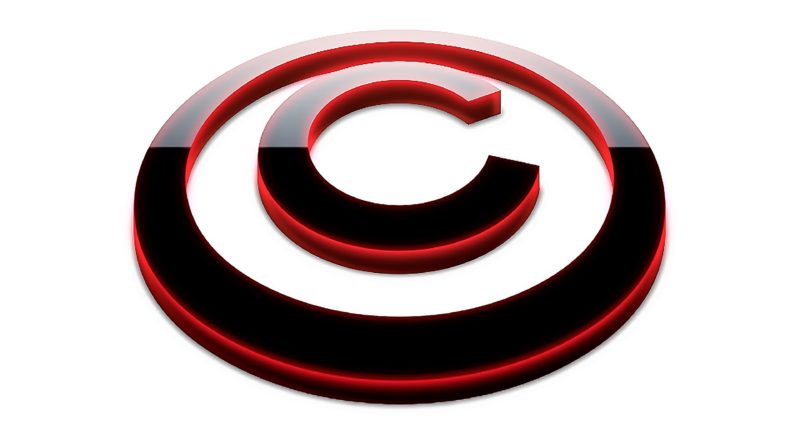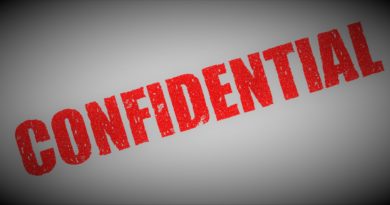Copyright Law
Copyright Act, 1957
Copyright in India subsists in original literary, dramatic, musical and artistic works, cinematograph films and sound recordings.
“work” means any of the following works, namely:-
- a literary, dramatic, musical or artistic work;
- a cinematograph film;
- a sound recording;
“literary work” includes computer programmes, tables and compilations including computer literary data bases ;
“computer” includes any electronic or similar device having information processing capabilities;
“computer programme” means a set of instructions expressed in words, codes, schemes or in any other form, including a machine readable medium, capable of causing a computer to perform a particular task or achieve a particular result;
“dramatic work” includes any piece for recitation, choreographic work or entertainment in dumb show, the scenic arrangement or acting form of which is fixed in writing or otherwise but does not include a cinematograph film;
“musical work” means a work consisting of music and includes any graphical notation of such work but does not include any words or any action intended to be sung, spoken or performed with the music;
“artistic work” means-
- a painting, a sculpture, a drawing (including a diagram, map, chart or plan), an engraving or a
- photograph, whether or not any such work possesses artistic quality;
- work of architecture; and
- any other work of artistic craftsmanship;
“work of architecture” means any building or structure having an artistic character or
design, or any model for such building or structure;
“cinematograph film” means any work of visual recording on any medium produced through a process from which a moving image may be produced by any means and includes a sound recording accompanying such visual recording and “cinematograph” shall be construed as including any work produced by any process analogous to cinematography including video films;
“sound recording” means a recording of sounds from which such sounds may be produced regardless of the medium on which such recording is made or the method by which the sounds are produced
If the work is a published work, then it has to be first published in India, or where the work is first published outside India, the author at the date of such publication, or in a case where the author was dead at that date, was at the time of his death, has to be a citizen of India;
‘publication’ means making a work available to the public by issue of copies or by communicating the work to the public.
For unpublished work other than a work of architecture the author at the date of the making of the work should be a citizen of India or domiciled in India. For a work of architecture the work should be located in India.
For copyright to subsist in any cinematograph film, it should not be an infringement of copyright in any other work; similarly in any sound recording made in respect of a literary, dramatic or musical work, if in making the sound recording, copyright in such work has been infringed, then no copyright will subsist in such work.
“Author’ means,-
- in relation to a literary or dramatic work, the author of the work;
- in relation to a musical work, the composer;
- in relation to an artistic work other than a photograph, the artist;
- in relation to a photograph, the person taking the photograph;
- in relation to a cinematograph or sound recording the producer; and
- in relation to any literary, dramatic, musical or artistic work which is computer-generated, the person who causes the work to be created;
The author of a work is the first owner of the copyright therein, with the following exceptions :
- in the case of a literary, dramatic or artistic work made by the author in the course of his employment by the proprietor of a newspaper, magazine or similar periodical under a contract of service or apprenticeship, the said proprietor shall, in the absence of any agreement to the contrary, be the first owner of the copyright in the work insofar as the copyright relates to the publication of the work in any newspaper, magazine or similar periodical, or to the reproduction of the work for the purpose of its being so published, but in all other respects the author shall be the first owner of the copyright in the work;
- subject to the provisions of the above clause, in the case of a photograph taken, or a painting or portrait drawn, or an engraving or a cinematograph film made, for valuable consideration at the instance of any person, such person shall, in the absence of any agreement to the contrary, be the first owner of the copyright therein;
- in the case of any address or speech delivered in public, the person who has delivered, such address or speech or if such person has delivered such address or speech on behalf of any other person, such other person shall be the first owner of the copyright therein notwithstanding that the person who delivers such address or speech, or, as the case may be, the person on whose behalf such address or speech is delivered, is employed by any other person who arranges such address or speech or on whose behalf or premises such address or speech is delivered;
- in the case of a government work, government shall, in the absence of any agreement to the contrary, be the first owner of the copyright therein;
Copyright means the exclusive right subject to the provisions of this Act, to do or authorise the doing of any of the following acts in respect of a work or any substantial part thereof, namely,-
- in the case of a literary, dramatic or musical work, not being a computer programme, make translation, adaptation, to reproduce work in any material form, issue copies of the work to the public, make cinematograph film or sound recording in respect of the work.
- In case of computer programme make translation, adaptation, to reproduce work in any material form, issue copies of the work to the public, make cinematograph film or sound recording in respect of the work and to sell or give on commercial rental or offer for sale or for commercial rental any copy of the computer programme.
- in the case of an artistic work,- to reproduce the work in any material form including depiction in three dimensions of a two dimensional work or in two dimensions of a three dimensional work, communicate the work to the public, issue work of the copies to the public, make any adaptation, include work in any cinematograph film.
- in the case of a cinematograph film, make a copy of the film, including a photograph of any image forming part thereof, sell or give on hire or offer for sale or hire, any copy of the film, communicate the film to the public;
- in the case of a sound recording to make any other sound recording embodying it; sell or give on hire, or offer for sale or hire, any copy of the sound recording , to communicate the sound recording to the public.
Any design which is registered under the Designs Act, 1911 shall not be entitled to copyright protection under the Act.
Assignment
The owner of the copyright in an existing work or even the prospective owner of the copyright in a future work may assign to any person copyright either wholly or partially and either generally or subject to limitations and either for the whole term of the copyright or any part thereof. An assignment has to be in writing signed by the assignor or his duly authorized agent.
Licence
The owner of the copyright in any existing work or the prospective owner of the copyright in any future work may grant any interest in the right by licence in writing signed by him or by his duly authorised agent. But in the case of a licence relating to copyright in any future work, the licence shall take effect only when the work comes into existence.
Duration of Copyright
- Copyright generally subsists in any literary, dramatic, musical or artistic work (other than a photograph) published within the lifetime of the author until sixty years from the beginning of the calendar year next following the year in which the author dies.
- In the case of a literary, dramatic, musical or artistic work (other than a photograph), which is published anonymously or pseudonymously, copyright shall subsist until sixty years from the beginning of the calendar year next following the year in which the work is first published
- In the case of a photograph, cinematograph films, sound recording copyright shall subsist until sixty years from the beginning of the calendar year next following the year in which the photograph, cinematograph films, sound recording is published.
Special Rights
Copyright act also provides authors with special rights other than the copyright. Author shall have the right to claim authorship of the work; and to restrain or claim damages in respect of any distortion, mutilation, modification or other act in relation to the said work which is done before the expiration of the term of copyright if such distortion, mutilation, modification or other act would be prejudicial to his honour or reputation.
Performer’s Rights
Performers appearing or engaging in any performance are granted special rights known as the “performer’s right” in relation to such performance.
“performance”, in relation to performer’s right, means any visual or acoustic presentation made
live by one or more performers;
Performer has been defined in the act as including an actor, singer, musician, dancer, acrobat, juggler, conjurer, snake charmer, a person delivering a lecture or any other person who makes a performance. Such right subsist until fifty years from the beginning of the calendar year next following the year in which the performance is made. During the continuance of the performer’s right in relation to any performance, any person who, without the consent of the performer, does make a sound recording or visual recording of the performance; or reproduces a sound recording or visual recording of the performance, which sound recording or visual recording was- made without the performer’s consent; or made for purposes different from those for which the performer gave his consent; or broadcasts the performance or communicates the performance to the public otherwise than by broadcast, except where such communication to the public is made from a sound recording or a visual recording or a broadcast, shall, subject to few exceptions, be deemed to have infringed the performer’s right.
But once a performer has consented to the incorporation of his performance in a cinematograph film, the protections will have no further application to such performance.
Broadcast Reproduction Right
Broadcasting organisations have been provided with special right known as “broadcast reproduction right” in respect of its broadcasts. Such right subsist until twenty-five years from the beginning of the calendar year next following the year in which the broadcast is made. Broadcast has been defined as means to communicate with the public by any means of wireless diffusion, whether in any one or more of the forms of signs, sounds or visual images or by wire, and includes a re-broadcast. During the continuance of the right in relation to any broadcast, any person who, without the licence of the owner of the right re-broadcasts the broadcasts; or causes the broadcast to be heard or seen by the public on payment of any charges; or makes any sound recording or visual recording of the broadcast; or makes any reproduction of such sound recording or visual recording where such initial recording was done without licence or, where it was licensed, for any purpose not envisaged by such licence; or sells or hires to the public, or offers for such sale or hire, any such sound recording or visual recording, is, subject to the few exceptions, deemed to have infringed the broadcast reproduction right.
Infringement of Copyright
Copyright can be infringed in any work when a person without a valid licence from the owner of the copyright or the registrar or in contravention of the conditions of the licence so granted does anything, the exclusive right to do which is by this Act conferred upon the owner of the copyright; or permits for profit any place to be used for the communication of the work to the public where such communication constitutes an infringement of the copyright in the work, unless he was not aware and had no reasonable ground for believing that such communication to the public would be an infringement of copyright;
or when any person- makes, or sells or lets for hire, or by way of trade displays or offers for sale or hire, or distributes or by way of trade exhibits in public, or imports into India, any infringing copies of the work. Importation of only one copy of any work for the private and domestic use of the importer would not be considered as an infringement.
Any person publishing a sound recording has to display on the sound recording as well as on any container thereof the name and address of the person who has made the [sound recording]; the name and address of the owner of the copyright in such work; and the year of its first publication.
Also Any person publishing a video film has to display in the video film, when exhibited, and on the video cassette or other container thereof a copy of the certificate granted by the Board of Film Certification under section 5A of that Act in respect of such work; the name and address of the person who has made the video film and a declaration by him that he has obtained the necessary licence or consent from the owner of the copyright in such work for making such video film; and the name and address of the owner of the copy right in such work.
“infringing copy” means,-
- in relation to a literary, dramatic, musical or artistic work, a reproduction thereof Otherwise than in the form of a cinematographic film;
- in relation to a cinematographic film, a copy of the film made on any medium by any means;
- in relation to a sound recording, any other recording embodying the same sound recording, made by any means;
- in relation to a programme or performance in which such a broadcast reproduction right or a performer’s right subsists under the provisions of this Act, the sound recording or a cinematographic film of such programme or performance, if such reproduction, copy or sound recording is made or imported in contravention of the provisions of this Act;
Several acts are enumerated which are considered not to be infringement of copyright. Few among them being a fair dealing with a literary, dramatic, musical or artistic work for the purpose of reporting current events- (i) in a newspaper, magazine or similar periodical, or (ii) by broadcast or in a cinematograph film or by means of photographs; a fair dealing with a literary, dramatic, musical or artistic work not being a computer programme for the purposes of- [(i) private use, including research (ii) criticism or review, whether of that work or of any other work; the performance of a literary, dramatic or musical work by an amateur club or society, if the performance is given to a non-paying audience, or for the benefit of a religious institution; the reproduction in a newspaper, magazine or other periodical of an article on current economic, political, social or religious topics, unless the author of such article has expressly reserved to himself the right of such reproduction;
Remedies for infringement of copyright
Where copyright in any work has been infringed, the owner of the copyright is entitled to all such remedies by way of injunction, damages, accounts and otherwise as are or may be conferred by law for the infringement of a right.
Regarding criminal offences, any person who knowingly infringes or abets the infringement of the copyright in a work, or any other right conferred by this Act, shall be punishable with imprisonment for a term which shall not be less than six months but which may extend to three years and with fine which shall not be less than fifty thousand rupees but which may extend to two lakh rupees. Proviso with the section mentions that where the infringement has not been made for gain in the course of trade or business the court may, for adequate and special reasons to be mentioned in the judgment, impose a sentence of imprisonment for a term of less than six months or a fine of less than fifty thousand rupees. Repeat convictions entail enhance punishments. Any subsequent conviction shall be punishable with imprisonment for a term which shall not be less than one year but which may extend to three years and with fine which shall not be less than one lakh rupees but which may extend to two lakh rupees
Registration of copyright
The Register of Copyrights in kept in six parts:
- Part I – Literary works other than computer programmes, tables and compilations including computer data bases and dramatic works.
- Part II – Musical works
- Part III – Artistic works
- Part IV – Cinematograph films
- Part V – Sound recordings
- Part VI – Computer programmes, tables and compilations including computer data bases.
An application for registration of copyright has to be made in accordance with Form IV and every application for registration of changes in the particulars of copyright entered in the Register of Copyright has to be made in accordance with Form V.
Every application has to be made in triplicate and has to be accompanied by the fee specified in the Second Schedule in this behalf



